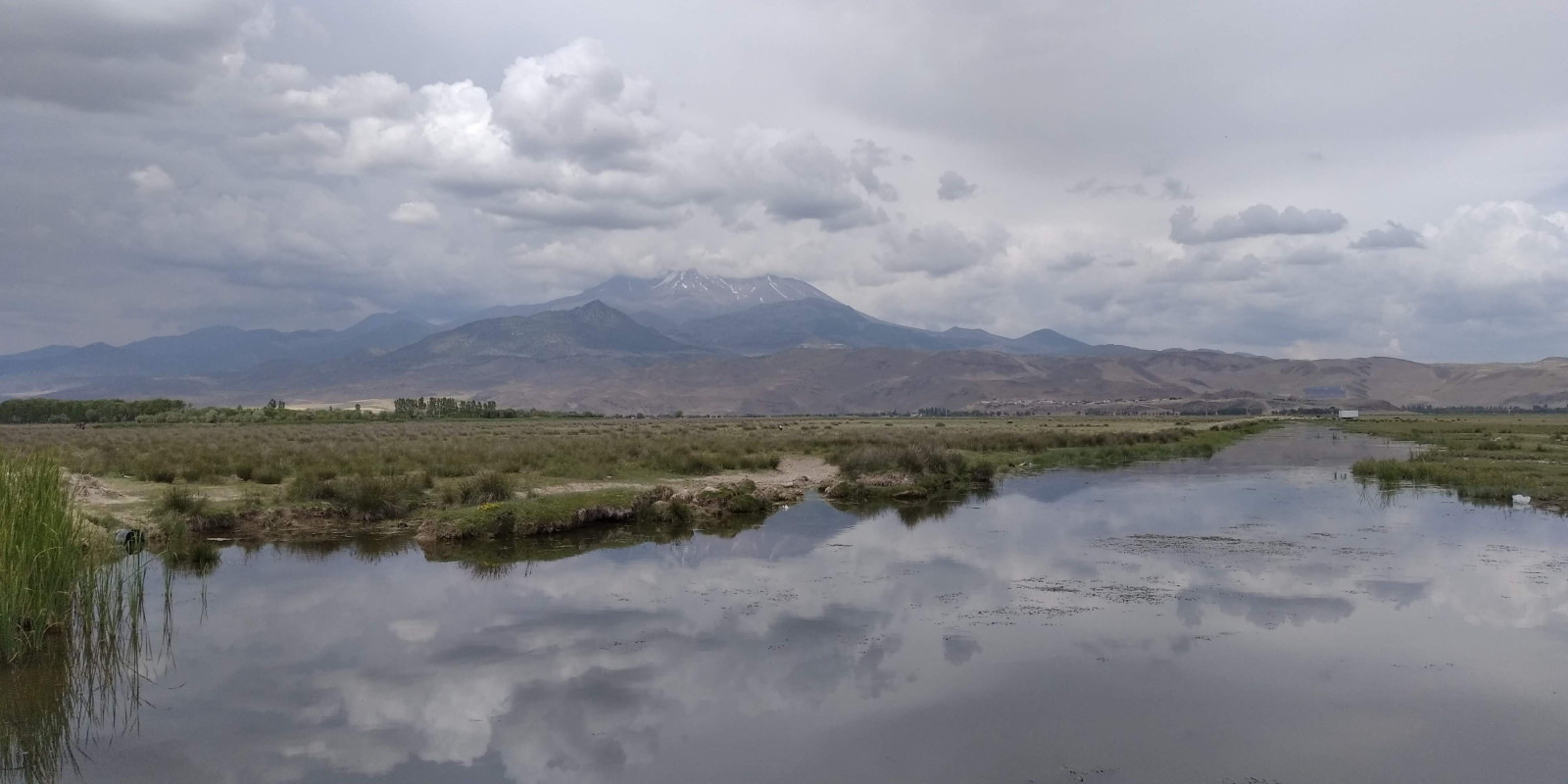Beschreibung
Sultan Marshes is an extensive wetland complex on the Develi plain. The site includes a saline lake, salt steppe, nutrient-rich freshwater marshes, wet meadows, small islands, and lakes. Situated in a closed basin and surrounded by hills and mountains, the area is an important breeding and wintering site for various species of endangered or globally threatened waterbirds. It is a Ramsar Site where Krickente have been counted/estimated more than 500.000 during the mid winter water bird counts in the past. Although Sultan Marshes suffered from many habitat degradation processes the area still is an impressive wetland system. Some of the birds you can expect are Rosaflamingo, Moorente, Weißkopf-Ruderente, Kolbenente, Schwarzhalstaucher, Wasserralle, Graukopf Purpurhuhn , Stelzenläufer and Häherkuckuck. But many more, see the list below.
Details
Zugang
The Sultan Marshes are located 40 km south of the city of Kayseri. The area is easy to reach by car. Also, there is public transport option from Kayseri city center to Yahyalı district. Best way to explore the area is by walking but there are also unpaved roads around the wetland that can be driven by car during the dry season. From the ticket office in Ovaciftliği village, on the southern side of the marshes a boardwalk route stretches into the marshes between tall reed beds. There's also a bird observation tower. Click on a P in the map to get directions or coordinates.
.jpg)




